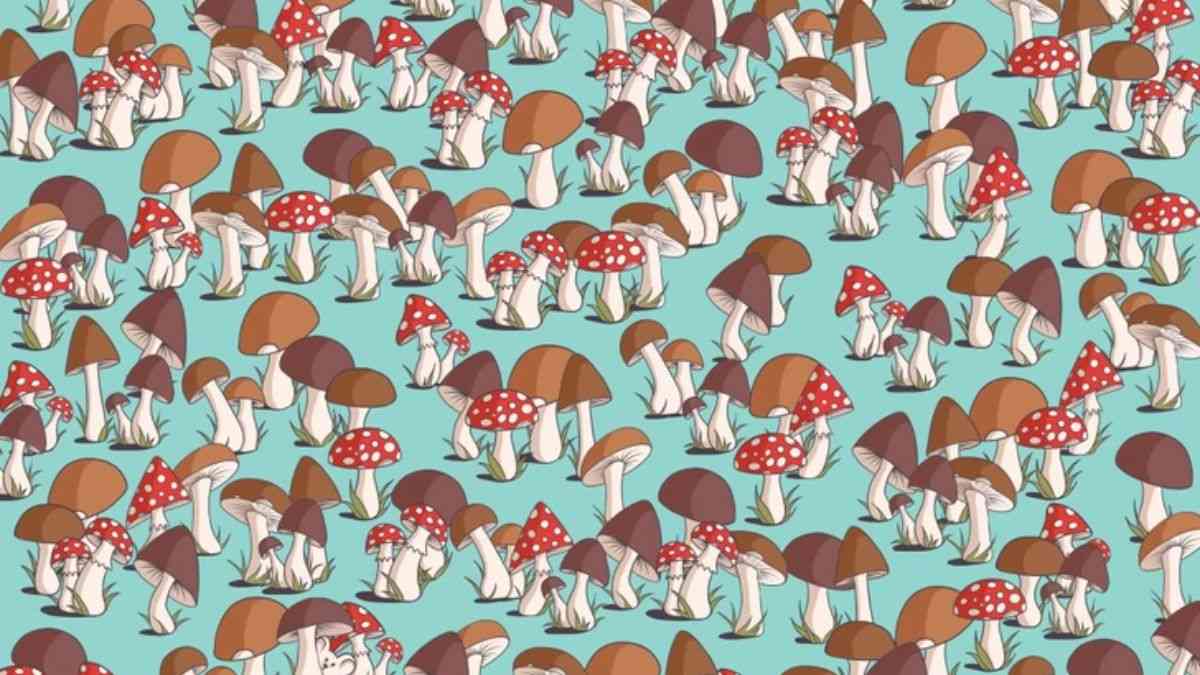Optical illusions have long fascinated and perplexed humans, showcasing the intricate workings of our visual perception.
These mind-bending images often challenge our cognitive abilities and reveal the limitations of our senses. One such optical illusion that has captured the attention of many is the “Mouse Among Squirrels” puzzle.
In this perplexing image, a mouse is cleverly hidden among a vast group of squirrels, blending seamlessly into its surroundings.
The challenge? To locate the elusive mouse amidst the sea of squirrels.
Let’s delve into the world of optical illusions, explore the science behind them, and unravel the secrets of this captivating visual puzzle.
The Fascination with Optical Illusions

From ancient times to the modern era, humans have been intrigued by optical illusions.
These captivating images deceive our brains by presenting conflicting visual information, forcing us to question what we see.
Optical illusions come in various forms, ranging from ambiguous figures and geometric patterns to illusions of motion and depth.
They play tricks on our visual system, highlighting the complex interplay between perception and reality.
The allure of optical illusions lies in their ability to challenge our perception and stimulate our cognitive faculties.
They offer a glimpse into the inner workings of the human mind, revealing how our brains interpret visual stimuli.
Whether it’s the famous “Rubin’s Vase” illusion or the mesmerizing “Hermann Grid,” optical illusions never fail to captivate and confound us.
The Mouse Among Squirrels Puzzle
One such optical illusion that has gained popularity in recent years is the “Mouse Among Squirrels” puzzle.
At first glance, the image appears to depict a group of squirrels nestled among tree branches, their fluffy tails and bushy fur blending seamlessly with the surrounding foliage.
However, hidden among the squirrels is a small mouse, its tiny frame obscured by the larger, more conspicuous squirrels.
The challenge posed by this optical illusion is simple yet tantalizing: can you find the mouse hiding among the squirrels?
As you scour the image, your eyes darting from one squirrel to another, you may find yourself drawn into a game of visual hide-and-seek.
The mouse remains elusive, its presence hinted at by subtle clues hidden within the image.
The Science Behind Optical Illusions
To understand why optical illusions such as the “Mouse Among Squirrels” puzzle captivate us, we must delve into the science of visual perception.
Our visual system is a complex network of neurons and pathways that process incoming visual information and construct our perception of the world around us.
However, this system is not infallible, and optical illusions exploit the inherent limitations and biases of our visual processing.
One of the key principles underlying optical illusions is the concept of Gestalt psychology, which emphasizes how we perceive objects as unified wholes rather than as a collection of individual parts.
Gestalt principles such as proximity, similarity, and closure influence how we organize visual stimuli and make sense of our surroundings.
In the case of the “Mouse Among Squirrels” puzzle, the Gestalt principle of similarity plays a crucial role, as the mouse’s appearance closely resembles that of the squirrels, making it difficult to discern from its surroundings.
Another factor contributing to the allure of optical illusions is our brain’s tendency to fill in missing information based on context and prior knowledge.
When faced with ambiguous or incomplete visual stimuli, our brains automatically fill in the gaps, sometimes leading to perceptual errors or illusions.
In the case of the “Mouse Among Squirrels” puzzle, our brains may struggle to distinguish the mouse from the squirrels, relying on contextual cues and visual cues to guide our search.
Strategies for Solving the Puzzle
As you embark on the quest to find the mouse hiding among the squirrels, employing certain strategies can increase your chances of success.
Here are some tips to help you crack the puzzle:
Focus on Details: Take your time to carefully examine each squirrel in the image, paying close attention to subtle differences in size, shape, and texture.
The mouse may be hiding in plain sight, disguised among its larger counterparts.
Scan the Periphery: Don’t forget to scan the edges and corners of the image, as the mouse may be lurking in a less conspicuous location.
Our eyes tend to gravitate towards the center of an image, so expanding your search to include the entire visual field can yield better results.
Use Gestalt Principles: Apply Gestalt principles such as similarity and closure to help you identify patterns and organize visual information.
Look for clues that differentiate the mouse from the squirrels, such as its smaller size or distinct features.
Take Breaks: If you find yourself becoming frustrated or fatigued, take a short break and return to the puzzle with fresh eyes.
Sometimes, a brief hiatus can provide a new perspective and make it easier to spot the hidden mouse.
Collaborate: Don’t be afraid to enlist the help of friends or family members in your quest to find the mouse.
Collaborative problem-solving can be both fun and rewarding, as you work together to unravel the mystery of the optical illusion.
Conclusion
The “Mouse Among Squirrels” puzzle offers a fascinating glimpse into the world of optical illusions, challenging our perception and cognitive abilities.
As you grapple with the task of finding the hidden mouse, you’ll gain insights into the intricacies of visual perception and the tricks our brains play on us.
Whether you crack the puzzle in a matter of minutes or spend hours scouring the image for clues, the journey itself is a testament to the enduring allure of optical illusions.
So, can you find the mouse hiding among the large group of squirrels?
Take up the challenge, sharpen your visual acuity, and embark on a thrilling adventure into the realm of optical illusions.
Who knows what other mysteries await your discovery in the vast landscape of the human mind’s perception?
